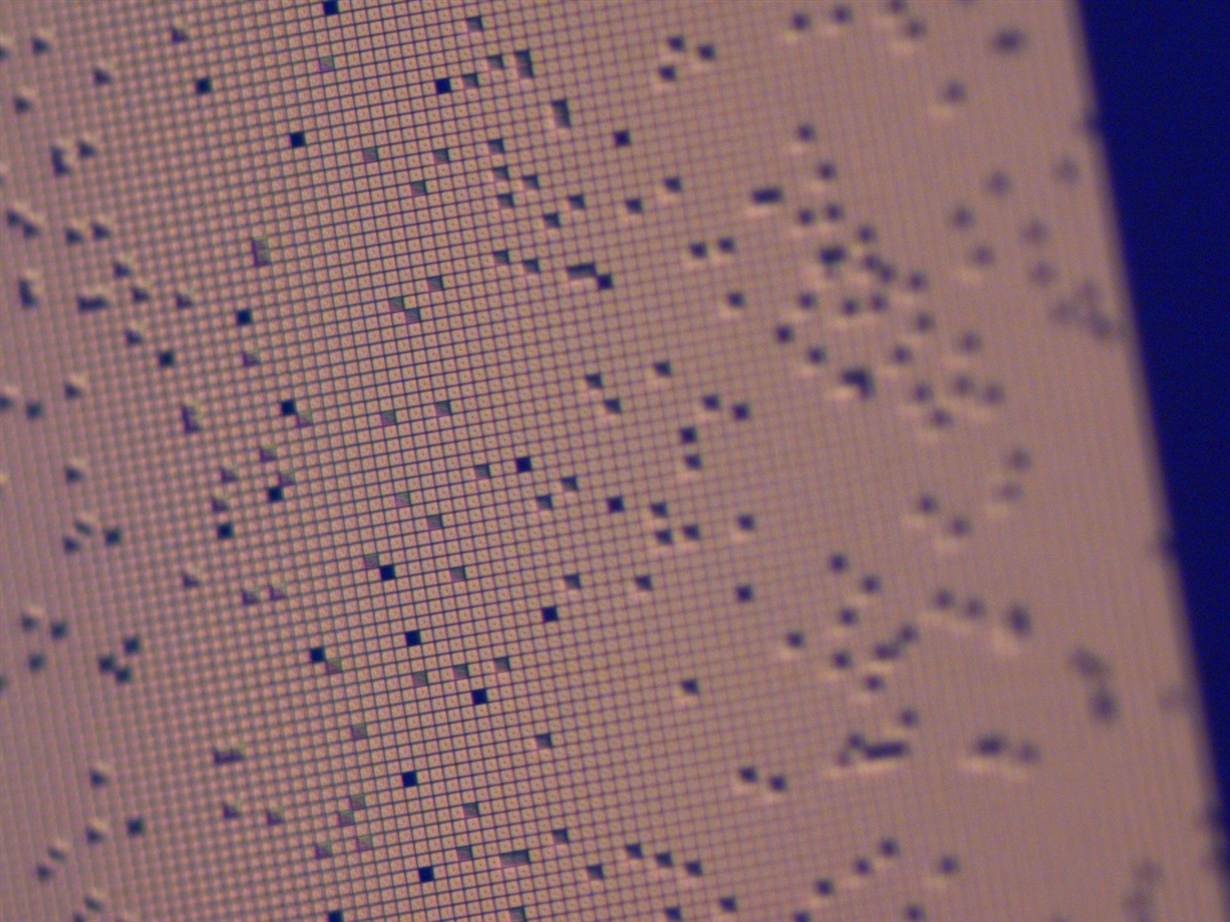Other Parts Discussed in Thread: DLPC2607, DLP2000
Hello Forum,
Like one previous post on making diffraction gratings, I also want to make and display my own patterns on the DMD. I understand that DLPDLCR2000EVM only allows you to display a 24-bit bmp image as a whole and no direct control over the individual mirror states. Still, I thought that if I could load a black or white image, then those two colors should correspond to ON/OFF of the mirrors (i.e. +12 or -12 degrees). Before I disassembled the light engine part (LEDs and lenses) to expose the DMD, I made sure everything that came with the package worked. For instance, I could use the Beaglebone Black and the structured light code + "pattern_disp" executable to display my own colorful images, as well as test out the python scripts.
However, once I get rid of the LEDs, display a black/white image with pattern_disp, and finally shined a 633-nm HeNe laser directly on the DMD, the result does not seem to depend on the display image. I am imaging the plane of the DMD, but I don't see any difference when I try various black/white images displayed on the DMD. Even when I now run Splash.py, I see no difference in the image.
Question: Is my understanding incorrect that totally black and totally white pixels in the 24-bit bmp image should correspond to mirrors turned to one state vs the other state (no temporal averaging)? Or are the mirrors always fixed in one state and it's the internal timing of the LEDs that make the image?



